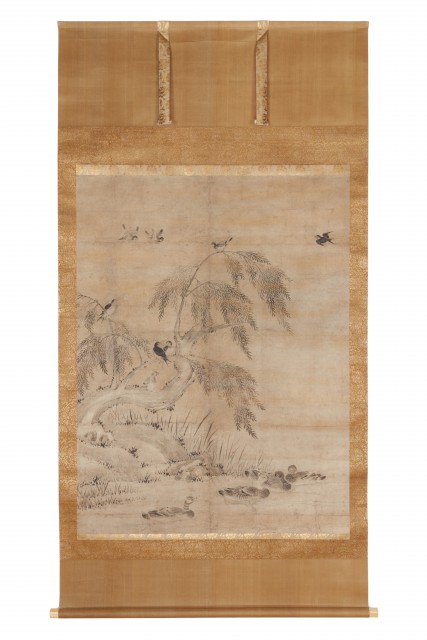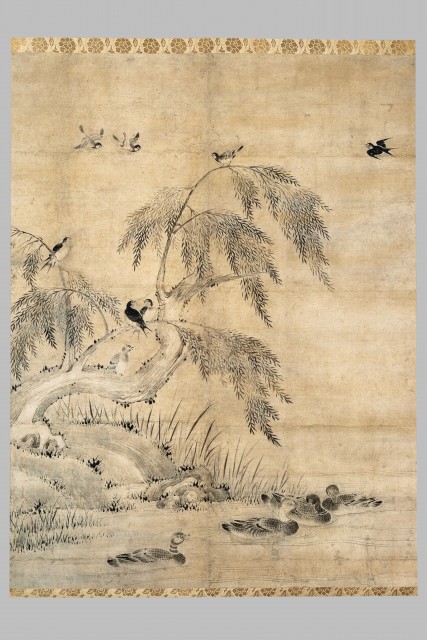Birds, Ducks, and Willow Tree

Digital image © Asia Society

Photography by Susumu Wakisaka, Idemitsu Museum of Arts, Tokyo, Digital image © Asia Society
[Kano school, possibly by Kano Shoei]
Birds, Ducks, and Willow Tree
mid-16th century
Japan
Folding screen panels mounted as a hanging scroll; ink on paper
Image only, H. 54 x W. 45 in. (137.2 x 114.3 cm)
Asia Society, New York: Mr. and Mrs. John D. Rockefeller 3rd Collection, 1979.213
Licensing inquiries
This large hanging scroll illustrates the use of Chinese prototypes that characterizes the Kano school, a hereditary family of painters employed by the Tokugawa shoguns and other military rulers. The school dominated Japanese painting from the 16th until the 19th century. In this painting, four ducks (or small geese) are shown resting in the water near a river bank while several birds, including swallows, flit about near or sit on the branches of a willow tree at the edge of the bank. The composition of the painting has been divided into three points of view: a foreground seen from above, a middle ground level with the viewer, and a background seen from below. This tripartite compositional device derived from Chinese ink painting traditions. The use of strong outlines to form the trunks of the trees and the shapes of the birds and the interest in sharply defined details seen in this painting typify the art of the Kano school and distinguish these works from softer, more atmospheric Chinese prototypes.

